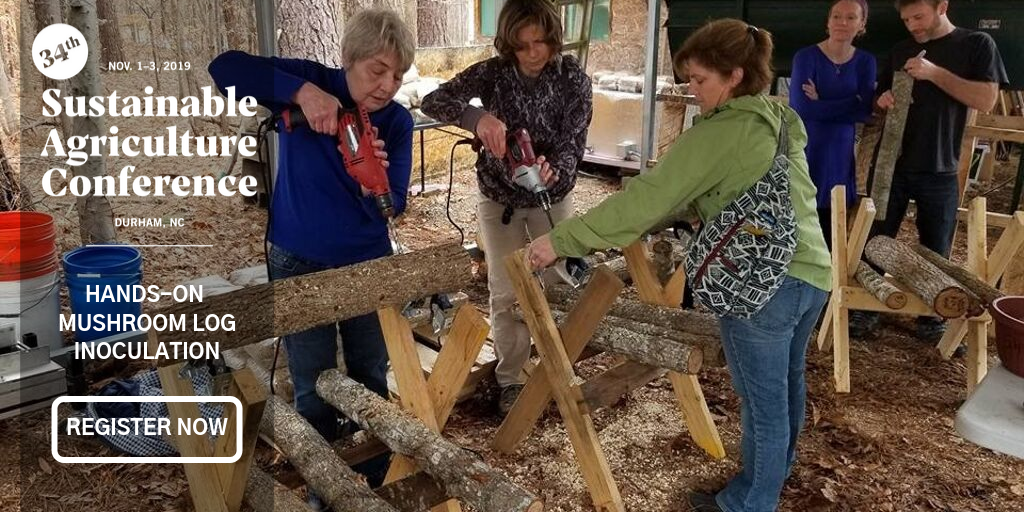by Laura Stewart, Haw River Mushrooms | Monday, Sept. 30, 2019 –
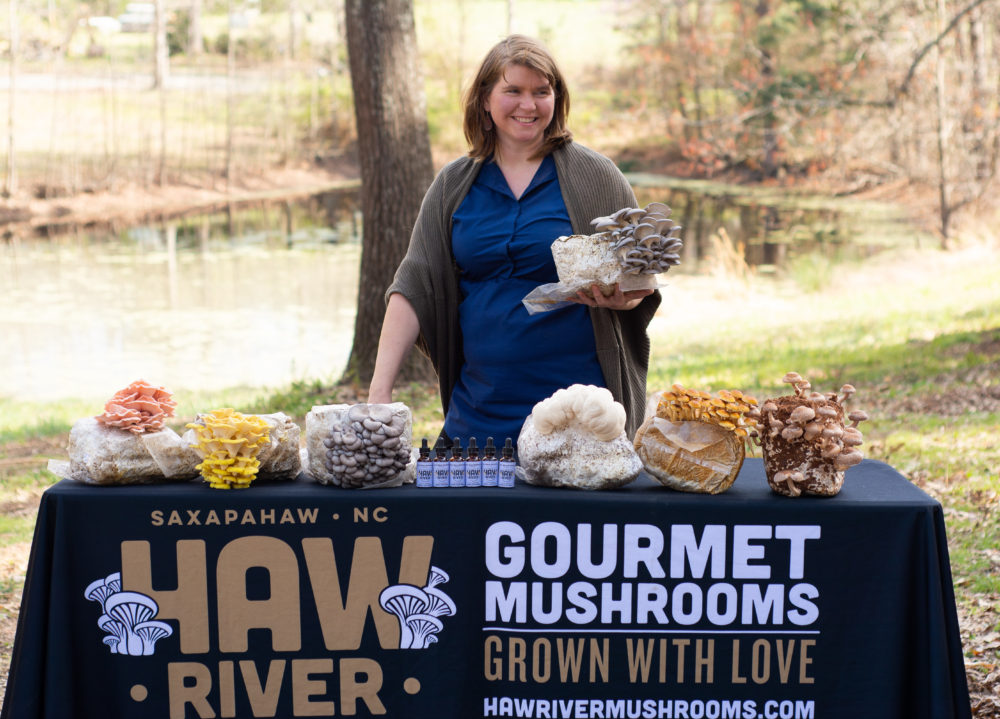
In 2010, when I met my now-husband, Ches, I never dreamed I would be farming, let alone that we would be churning out hundreds of pounds of edible mushrooms each week, three tons a month of spent substrate, and 100 pounds a quarter of mushroom substrate fed vermicompost. It’s been a long and winding road to worms and fungus! The farming methods we use for such intensive production require a lot of labor to control the mushrooms’ access to light, temperature, oxygen, and humidity so that we can provide a yearlong crop. However, as labor intensive as mushroom growing can be in a concentrated agriculture operation, they can be one of the most passive crops possible when grown on logs for outdoor production. This article will share a bit about the many benefits of mushroom cultivation—even if you don’t plan to measure your production by the ton!
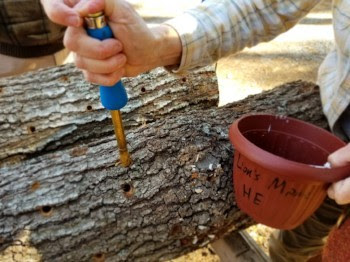
In other parts of the world, a small mushroom growing area is about as common as a little tomato garden is here in the South. The beauty of this is that the Carolinas are a great climate for us to incorporate these high-nutrient, fast-growing crops into our homegrown rotation.
Here are my top five reasons why everyone with three square feet of shady space ought to consider some sort of mushroom cultivation:
- Mushrooms are forgiving crops. While growing on a commercial scale like we do at our farm requires lots of time and intensive management to monitor moisture, CO2 levels, airflow, and light, small growers really just need a shady, well-ventilated spot with reasonable access to water (usually provided by rain).
- Mushrooms have a fantastic nutritional profile. Not only that, but they grow quickly! We can take an oyster mushroom from grain spawn to harvest in as little as three weeks. Having more of us growing mushrooms is a great way to build community resilience and food security.
- They fruit when a lot of other crops are out of commission. My first ever shiitake crop fruited at midnight on New Year’s Day (OK, that’s when I found them fruiting, but trust me, it was magical!). If you welcome fall but feel sad about pulling out that last tomato plant, you can celebrate that the cooler weather will make space for lion’s mane, shiitake, wine caps, blewits and many varieties of oyster mushrooms.
- Your spent substrate can be a soil amendment. Your spent substrate, the stuff you grew your mushrooms on—e.g., logs, straw, soil, has an awesome second life awaiting it as a soil amendment.
- Mushrooms can provide CO2 supplementation in a greenhouse or high tunnel where concentrated photosynthesis can make C02 a scarce resource.
In January 2017, I thought it would be fun to offer a log inoculation class to teach more people how to grow gourmet wood mushrooms. The first class was so fun and friendly that we decided to offer more. By the end of that spring, more than 200 people had come to our farm and collectively inoculated more than 1,000 logs. As we enter our third year of offering the class, we’re approaching the 1,000 participant mark. This has also represented quite the unplanned variety trial! We’ve seen our cultures go back to their homes all over the state and sometimes across the border. Folks are fruiting mushroom logs on shady apartment balconies, in high tunnels and in their woods, as well as by leaning them against the north side of suburban homes. Many participants have even felled their own trees to expand their log collection exponentially.
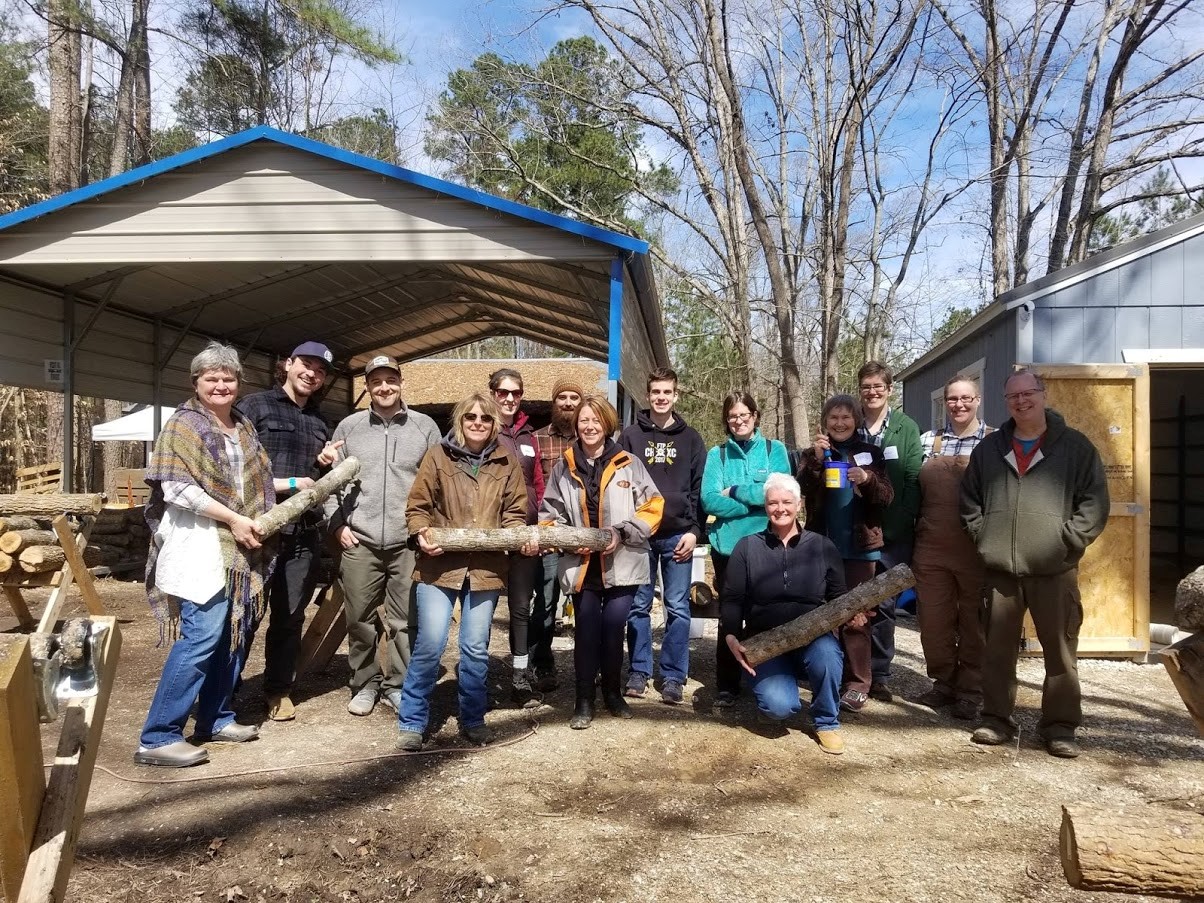
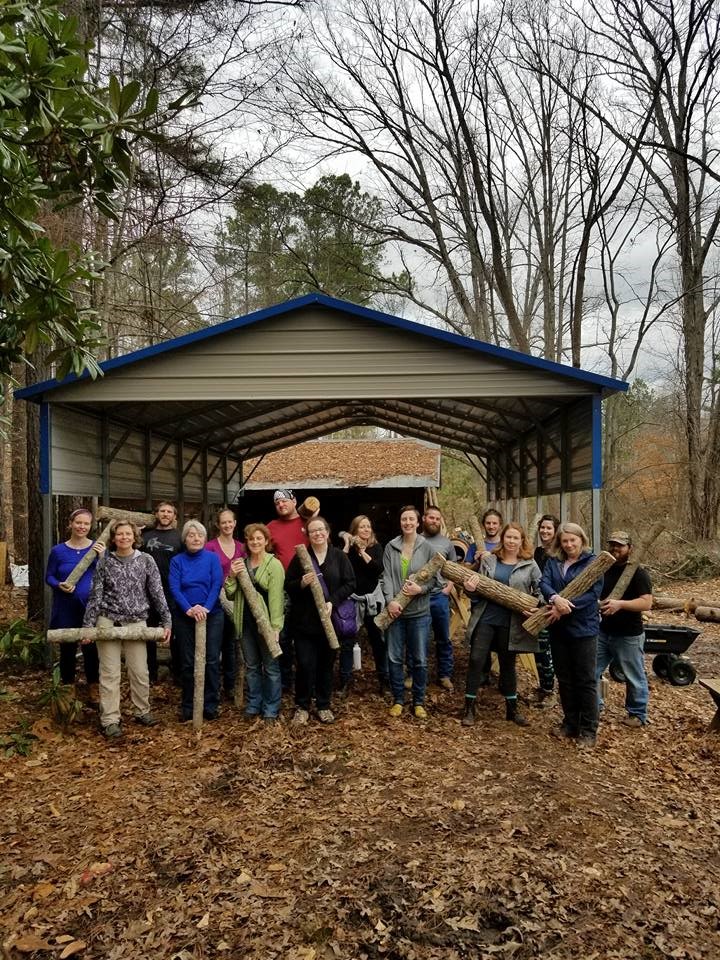
I often end the log classes by saying, “Congratulations, you are all going home with fungus!” This typically gets quite a cheer (it’s all about perspective, right?!). What this workshop series has taught me is that mushrooms are remarkably adaptable and prospective mushroom growers/gardeners come from all walks of life.
Farmers reading this article are likely to already regard themselves in some shape or form as “keepers of the soil.” Inherently, this also makes you “keepers of the mycelium,” as fungi make up to 30% of healthy soil contents. Whether thinking about fungi as a source of soil improvement, a new crop for your customers, or a food source for your homestead, I hope you also get to go home to fungus!
Don’t Miss Hearing Laura Stewart of Haw River Mushrooms at SAC 2019
Register for Laura’s pre-conference intensive on Friday, November 1 to participate in Hands-On Mushroom Log Inoculation.
While everyone attends the Sustainable Agriculture Conference for different reasons, they all share a dedication to the mission of creating a sustainable local food system that works for everyone. By gathering together a diverse community of people who share a similar vision for the future and giving them a space for sharing knowledge and making valuable connections, SAC helps create a more vibrant, sustainable food system in the Carolinas.
Please join us at CFSAC2019, Nov. 1-3 in Durham to learn, share knowledge, make valuable connections, and see old friends. Register here.
About the Author
Laura Stewart is the owner of Haw River Mushrooms farm located in Saxpahaw, NC, a family farm specializing in hardwood mushrooms and grows over 400 pounds of shiitake, lion’s mane, oyster, cinnamon cap and other seasonal mushrooms each week in an indoor, temperature-controlled environment. Her mushrooms are sold at Chapel Hill, Eno, Greensboro Curb, and Durham Farmers Market and to chefs throughout the Triangle and Triad. Laura is also an instructor for the Wild Mushroom Safety Course which allows foragers to sell mushrooms to chefs.
Check out Haw River Mushrooms’ website for farm updates and other educational opportunities.
All photos courtesy of Laura Stewart.



